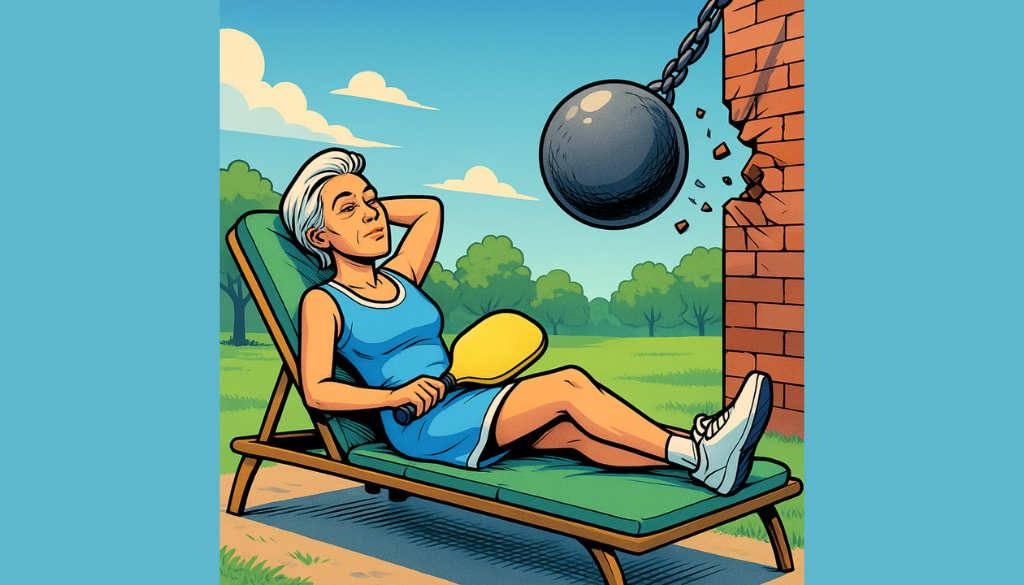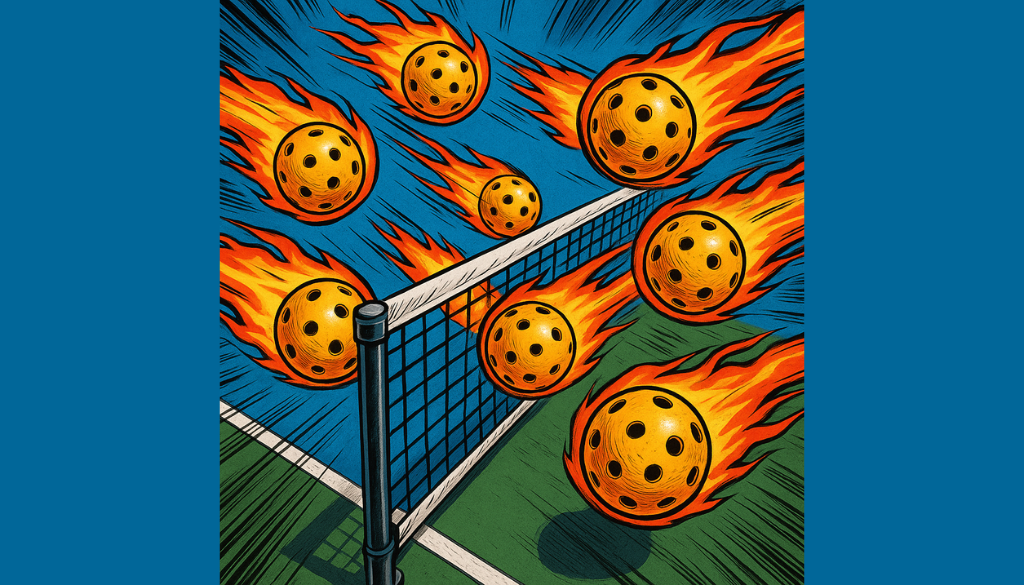Let’s start with a question you’ve probably never been asked at the pickleball courts:
“How long can you stand on one foot, eyes closed?”
You might think this test is a party game, or some kind of warm-up drill. But doctors who study sports injuries use this exact move to spot which players will sprain an ankle in the next two weeks.
Let’s break it down.
When you stand on one foot with your eyes closed, your body has to work hard to keep you steady. Your brain gets no help from your eyes, so your ankles and the nerves in your feet must do the job. If they can’t, your whole body wobbles.
Why Most Players Don’t Know About This?
For starters, balance training isn’t exactly glamorous. It’s not what people brag about over post-game coffee. But for rec players, especially those of us with a little more mileage on our joints, it’s quietly become the real MVP.
Truth is, we spend so much time chasing the next big tip or piece of gear, we forget about the basic skills that keep us playing. Until an injury reminds us – hard.
Take the Test Right Now
So stop reading and do this.
- Take off your shoes
- Stand near a wall (don’t touch it)
- Lift your right foot 6 inches off the ground
- Close your eyes
- Count out loud until you wobble or hop
Do it now and test both feet.
What Your Score Means (and Why It’s Not Too Late)
Let’s look at your test score:
- If you lasted under ten seconds: You’re at high risk for an ankle sprain. That’s the same as walking onto the court knowing the floor is slippery.
- If you lasted ten to twenty seconds: You have some risk. That’s like driving a car with the gas light on. You can still play, but you need to fix it soon.
- If you lasted twenty to thirty seconds: Good job. You have better balance than most. Still, don’t stop here. Balance gets lost fast.
- If you held on past thirty seconds: You’re in the top group. But don’t get cocky. One week off can bring you right back down.
The best part? These numbers are not set in stone. With work, anyone can improve – fast.
How to Train Your Balance in Ten Minutes a Day
You don’t need fancy shoes or a gym. All you need is a patch of open floor, a hallway, and something soft to toss.
First, the “Stand and Hold”
Every morning, after you wake up or before you play, stand on one foot for thirty seconds. Try it eyes open first. Work up to eyes closed. Wobble? That’s okay. Tap the wall with one finger. Your nerves learn with each try.
Next, “Walk the Line”
Walk heel-to-toe down a hallway. Arms folded across your chest. When you get to the end, turn and walk back. Repeat three times. This trains the nerves that help you change direction on the court.
Then, “Side-to-Side Hops”
Hop gently from side to side on one foot. Count out fifteen seconds. Switch feet. This move is like lunging for a wide dink or making a quick get at the kitchen line.
Last, “The Ball Toss”
Stand on one foot. Hold a pickleball in your hand. Toss it up and catch it ten times. Try it with your eyes open first, then eyes closed if you feel steady. This is just what your ankles face when you stretch to save a shot.
Each drill teaches your ankle and brain to talk. Not in words, but in quick, clear signals – stand, shift, jump, land.
Bottom Line: Don’t Skip the Basics
Here’s the truth: You can spend $200 on a new paddle. You can take lessons. You can drill until your arm falls off. But if your ankles aren’t solid, one weird step ends your season.
This balance routine isn’t complicated. It isn’t expensive. It’s just ten minutes a day of feeling a little ridiculous in your kitchen. But it works. And it beats the hell out of sitting out for six weeks.





